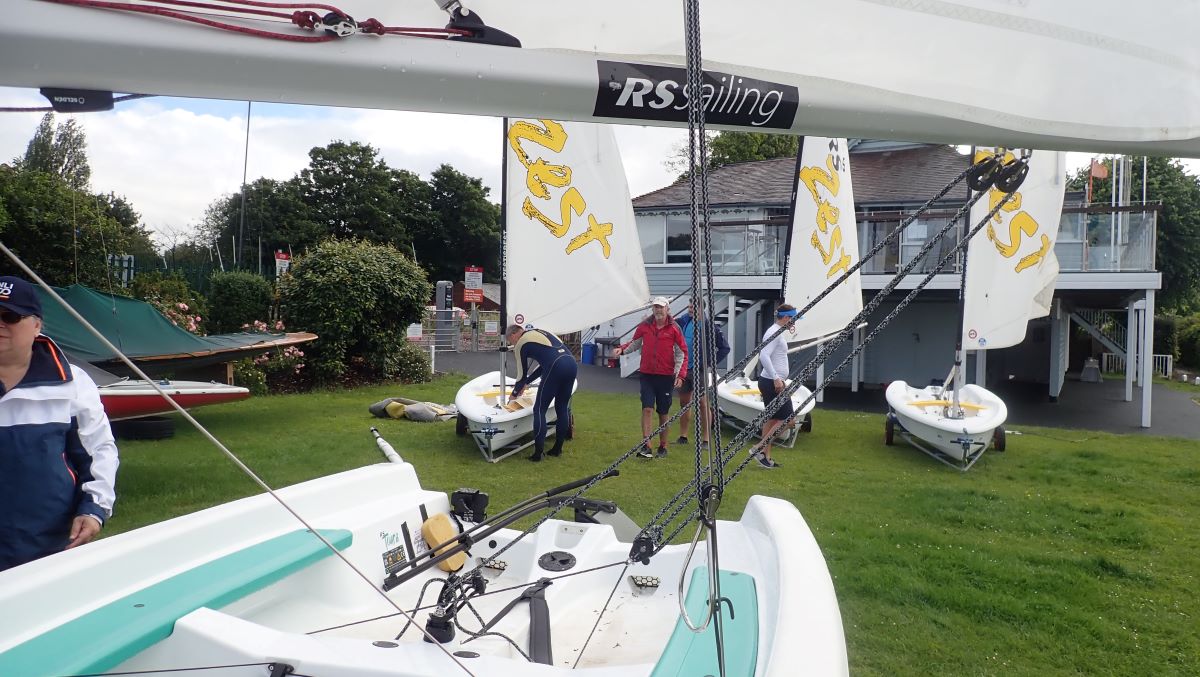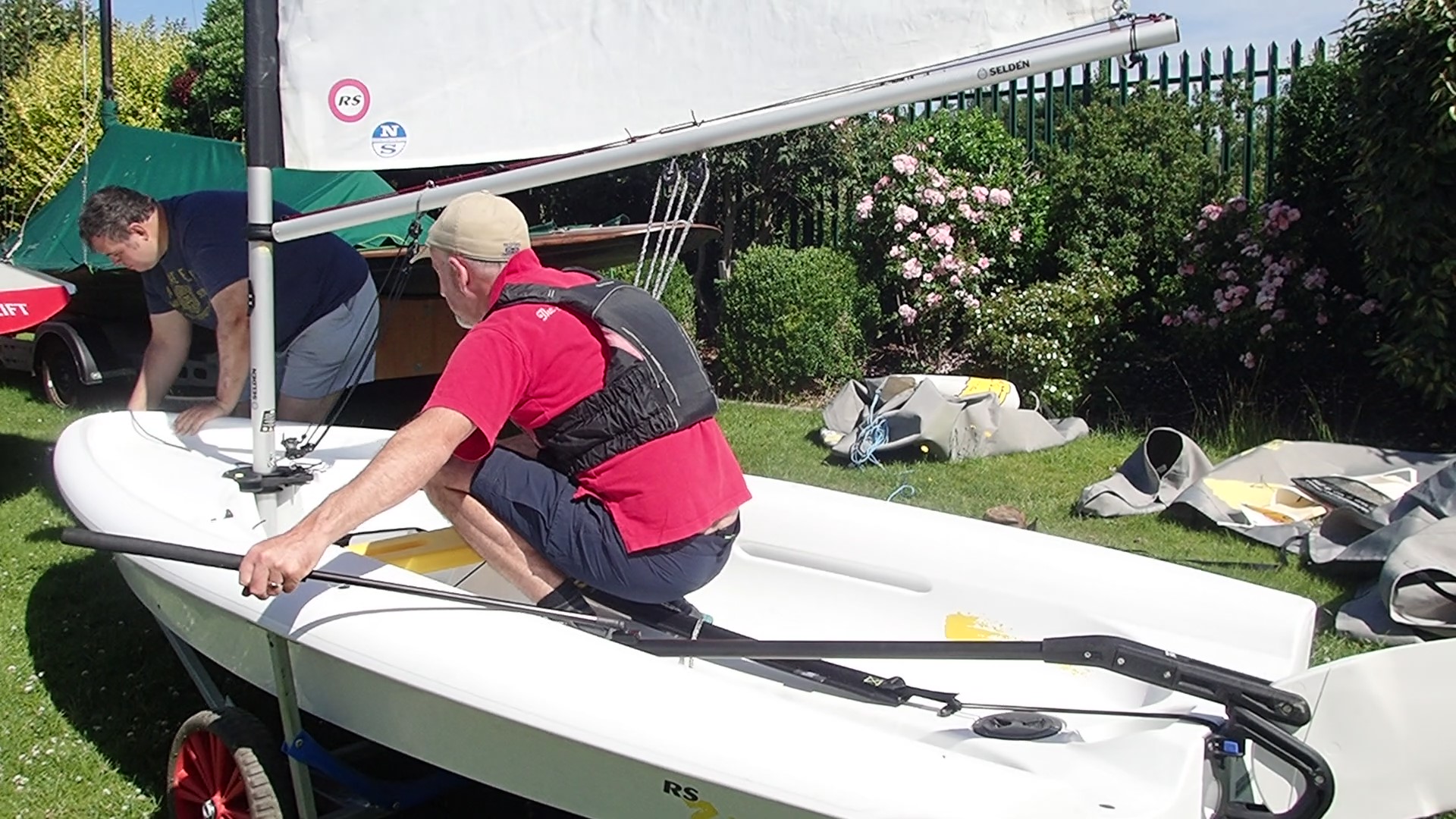admin June 22, 2024 Sailing Previous Lesson Comments (0)
Rigging the Boat, then learning how to move in the boat and most important balancing the boat.
I am Learning to sail at the Upper Thames Sailing Club. My first course is the RYA Start Sailing Course. This is a series of morning sessions run at my pace by an RYA qualified Instructor Mark. We are learning in an RS Toura as it is a particularly stable boat designed for learning in.
The first job is learning to Rig the boat. This is done out of the water.
We had RS Zests and an RS Toura. The Zests were quite easy to rig. Some had not been taken out before so we had to put the sail over the mast and then raise it up and attach the boom and attach the sail to the boom and pull on the sheets.
Ahoy on Dry Land: Learning to Sail Without Getting Wet
Welcome aboard the H.M.S. Drydock! Today, we’re embarking on a thrilling adventure through the world of sailing—without the whole “water” part. That’s right, folks! We’re going to learn to sail on dry land, where the only thing you might get wet is your sense of dignity.
Step 1: Meet Your Vessel
First things first: you need a boat. Ideally, one on a trailer, because let’s be honest, dragging a full boat down the street would get you a lot of unwanted attention (and maybe a few tickets). Find a nice, open space where you won’t be mistaken for a rogue lawn ornament.
Now, let’s assemble the crew! You’ll need a strong person to act as a counterweight. This is crucial because, unlike real sailing, there’s no water to keep things steady. You’ll also need a Captain on the shore—let’s call him Captain Crunch—who will be shouting orders and probably eating cereal while you’re trying not to look like a clumsy flamingo.
Step 2) The seating position.
So, you’re at the helm, looking every bit the part of a seasoned sailor. But let’s get one thing straight: while standing in the middle of the boat may seem cool—think Captain Morgan meets the dude from the beach—it’s not exactly safe. You know that feeling when you’re trying to balance on a seesaw? Yeah, that’s your boat when you’re standing.
The safest spot?
Sit down on one side, ideally opposite the mainsail. This way, you can see where you’re headed and avoid becoming an unexpected fish out of water (or a very awkward tumble). Position yourself as close to the thwart as possible. Your leg gently grazing it is just fine; it’s not a pillow fight, after all!
Now, grab the tiller with the hand nearest the stern, and with the other, pull in the mainsheet until you feel the wind’s loving embrace. You’re not just sailing; you’re setting the stage for the grand performance of your life!
Step 3) Ready About: The Moment of Truth
Now that you’re comfortably seated (and possibly questioning your life choices), it’s time for a little thing called “Ready About.” If you’re sailing on a river, this is when you realize you’re about to greet the bank with a not-so-friendly hug. On the open sea, it’s when you’ve realized you’ve zigzagged so far off course that you could give a GPS a complex.
When you’re ready to turn the boat, you shout “Ready about!” and wait for the crew’s response. Spoiler alert: they might be too busy giggling at your last attempt to wave at imaginary dolphins. If they reply with a “Ready,” great! If not, well, ready or not, here comes the turn!
In River Sailing the need to avoid the bank can happen every 10-15 seconds.
Step 4) Push Away with the Tiller: The Dance Begins
As you push the tiller away, the boat begins to turn. On dry land, this is where things get real. Your imaginary counterweight (because, let’s face it, you’ve got enough weight issues already) has to “get up” and push the boat around, usually about 90 degrees or so in the opposite direction.
As the boat turns, your sail catches the wind on the other side, and if you’re not careful, you might end up resembling a confused scarecrow caught in a windstorm. Remember, this isn’t just a gentle turn; it’s a full-on dance move. The Tiller Tango, if you will.
And let’s not forget the footwork! You’ve got to perform a little dance to keep everything steady. Think of it as a ballet routine, but with more shouting and less grace. As you pivot, you might feel like you’re auditioning for a reality show called “Dancing with the (Imaginary) Boats.”
So stand up, swivel and face the front of the boat. Many people balance themselves by having on foot either side of the centre of the boat. Keep hold of the tiller and the rope duck to avoid the boom hitting you and move your weight to the other side of the boat. in the water the boat will try to lean and you are attempting to stop this. - A flat boat is a fast boat.
Step 5) recover the boat and sit down
Sit down and swap the hands on the tiller. This is easiest done behind you and change the rope to the other hand and you are all sorted.. Swapping hands isn't easy and this is why practise is necessary. I kept dropping the rope my first few times. Losing the rope means that you lose power from the sail. Dropping the tiller means you loose all steering which means that the boat travels in circles with the boom wildly sweeping from one side of the boat to another frantically trying to knock the Helm into the water.
Assuming handing over works then pull in the sail and off you go ready to tack again in perhaps a few moments.

